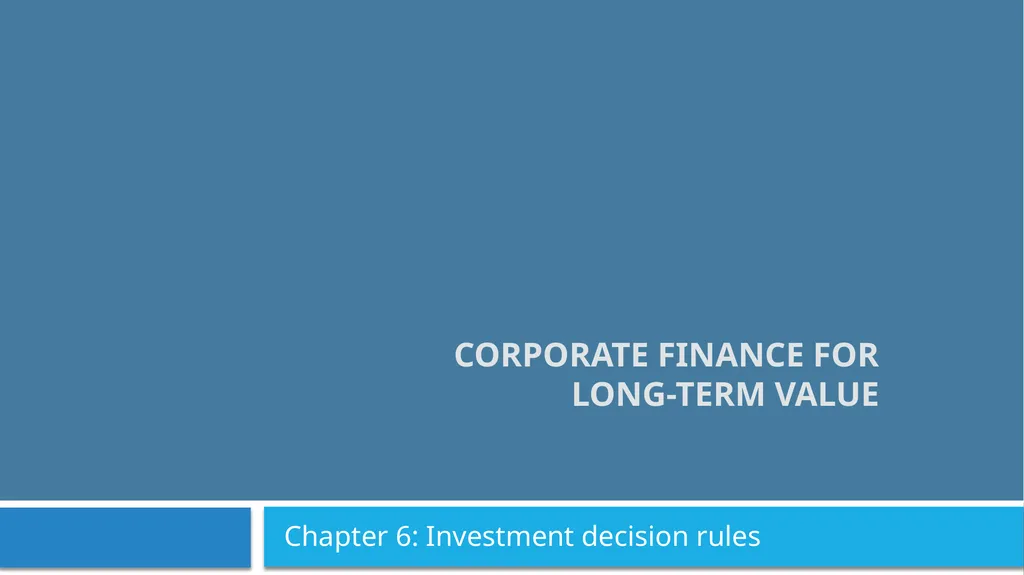Corporate Finance for Long-Term Value Chapter 6:
Author : danika-pritchard | Published Date : 2025-06-27
Description: Corporate Finance for LongTerm Value Chapter 6 Investment decision rules Chapter 6 Investment decision rules Part 2 Discount rates and valuation methods The BIG Picture 3 How to select investment projects Traditional solution Calculate
Presentation Embed Code
Download Presentation
Download
Presentation The PPT/PDF document
"Corporate Finance for Long-Term Value Chapter 6:" is the property of its rightful owner.
Permission is granted to download and print the materials on this website for personal, non-commercial use only,
and to display it on your personal computer provided you do not modify the materials and that you retain all
copyright notices contained in the materials. By downloading content from our website, you accept the terms of
this agreement.
Transcript:Corporate Finance for Long-Term Value Chapter 6::
Corporate Finance for Long-Term Value Chapter 6: Investment decision rules Chapter 6: Investment decision rules Part 2: Discount rates and valuation methods The BIG Picture 3 How to select investment projects? Traditional solution Calculate the net present value (NPV) of projects -> based on FV Do only projects with positive NPV New solution Include also SV and EV to obtain Integrated Present Value (IPV) Analyse the interactions between F, S and E in projects -> internalisation Calculating financial value 4 Calculating financial value 5 Comparing investment projects using NPV method NPV per euro invested: 21.7 / 100 = 21.7% NPV per euro invested: 11.65 / 50 = 23.3% If project Y can be duplicated, then Y > X Project Y Project X Payback rule 6 Payback rule: only do an investment if its cash flows pay back the initial investment within a pre-specified period The payback period is the number of years needed to earn back the initial investment Advantages: ease of use Disadvantages: Payback period is usually arbitrarily determined Does not account for time value of money Makes cash flows after cut-off point irrelevant (reinforcing short-termism) IRR rule 7 The internal rate of return (IRR) is the discount rate at which a project’s NPV equals zero IRR Rule: do investment if IRR > opportunity cost of capital Advantage: indicates safety Disadvantage: not useful in comparing projects of different sizes Using trial and error or the IRR formula in Excel: r = 0.163 IRR rule 8 For project A, there are two points at which NPV = 0, so there’s no unique solution Problem when CF sign flips several times (like project A) NPV vs IRR and payback 9 Preference for NPV, since: NPVs can be added up It is a direct measure of value created for shareholders (the manager’s primary objective) Behavioural effects on investment decisions 10 People often behave irrationally in corporate investment decisions Internal errors are misvaluations by corporate managers Overconfidence: underestimating the risk of investments, resulting in a lower discount rate Excessive optimism: overestimation of cash flows Ways to spot internal errors: prematurely liquidating options, earnings missed and excessive press coverage External errors are misvaluations by participants in financial markets Behavioural biases, e.g., availability bias and confirmation bias Overconfidence and excessive optimism 11 Problem Suppose three managers assess the same project. The table (right) gives their individual estimates of project risk and expected cash flows, as














